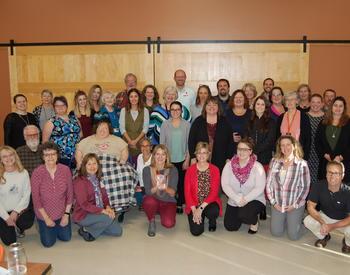The U.S. Broadband Equity, Access and Deployment Program (BEAD) identifies covered populations as historically disadvantaged groups. The covered populations include:
- Racial or ethnic minorities.
- Individuals facing language barriers.
- Individuals with low literacy.
- Individuals with disabilities.
- Individuals 60 and older.
- Military veterans.
- Incarcerated individuals.
- Rural residents.
There are numerous challenges that hinder individuals within the covered populations from using broadband for health-related purposes, exacerbating health care disparities. This article explores the complexities and challenges encountered by these groups that underscore the critical need for tailored approaches to improve health care access and use through digital platforms.
Racial or ethnic minorities
Telehealth consultations offer significant benefits to patients. However, challenges have arisen for racial or ethnic minority groups seeking health services through telehealth. Some of the obstacles they encounter include the cost and accessibility of equipment, limited understanding of how to use the equipment and a lack of proficiency in digital skills.
Individuals facing language barriers
People with limited English proficiency demonstrate lower rates of telehealth services usage compared to individuals fluent in the language. In countries where English serves as the primary language, individuals with limited English proficiency may face considerable difficulties in navigating telehealth and information technology tools. This indicates that such patients may be at a higher risk of receiving lower-quality health care during telehealth interactions.
Individuals with low literacy
A digital gap exists among individuals with limited literacy skills. Those with lower literacy levels are less likely to own smartphones or use the internet, particularly for health-related purposes. Regardless of age and socioeconomic factors such as education and household income, having limited literacy skills poses a significant risk for decreased access and usage of health-related resources.
Individuals with disabilities
While the internet offers valuable information and socializing opportunities, many individuals with disabilities struggle to access them through traditional means. Information and communication technologies (ICT) empower people with disabilities to overcome isolation and stigma, similar to medical and assistive technologies that improve physical abilities. Examples of ICT encompass computer and web-based accessibility tools such as screen readers, speech recognition, video communication – for sign language and relay interpretation – voice-to-text services – like open and closed captioning – and visual assistance. ICT benefits extend beyond mental health. Research shows they can lead to shorter hospital stays and fewer visits for elderly individuals with disabilities and improve the quality of life for those with spinal cord injuries.
Older adults
People 60 and older who use the internet tend to experience better well-being. Since older adults often face more health issues than younger ones, accessing health information online can be especially beneficial for older people. E-health information offers improved accessibility, particularly for older adults in remote rural areas. The elderly can use the internet for health management, such as making informed decisions, communicating with health care professionals, accessing medical services and participating in health programs.
Military veterans
The veteran community under Veterans Administration care represents a unique group in which the convergence of chronic health conditions, housing instability, substance misuse and mental health struggles play a crucial role in influencing their engagement with Internet technologies. Veterans, who are more susceptible to both physical and mental health needs, could derive benefits from the availability and use of telehealth services. The adoption of telehealth services has been widely recognized as a strategy to improve health care access and overcome barriers within the veteran population. This is particularly relevant for older rural veterans, who are the primary focus of telehealth initiatives due to their complex health conditions and limited access to medical facilities.
Incarcerated individuals
Imprisoned individuals encounter various health and societal hurdles, compounded by restricted access to digital health care and social assistance services due to supervised internet usage in correctional facilities. Throughout the COVID-19 pandemic, lockdown measures in many institutions have further isolated inmates, limiting interactions except among those sharing cells or residing in communal dorms. This isolation takes a toll on the mental and physical well-being of prisoners, potentially exacerbating challenges post-release.
While the integration of digital technology in correctional facilities offers opportunities, it's essential to carefully consider how digital health care and social support services address the unique needs of incarcerated individuals. The primary goal should be facilitating their successful reintegration into society and reducing the likelihood of reoffending.
Rural population
In rural areas, access to health care is challenging due to limited providers and geographical obstacles. Telehealth offers a significant opportunity to improve health care accessibility in these regions. However, its effectiveness relies on having fast and reliable broadband connections. As broadband becomes essential for health, communities lacking digital access may experience poorer health outcomes due to limited educational and economic opportunities, as well as restricted access to high-quality health care services.
Conclusion
The examination of broadband access’ impact on various demographic groups highlights significant challenges in accessing digital health care services. Addressing these disparities requires tailored approaches and improvements in broadband infrastructure to ensure equitable access to quality health care for all individuals, regardless of their background or location. Efforts to enhance broadband access and develop inclusive health care technologies are vital for fostering health equity.
Sources
- Ali, M. A., Alam, K., & Taylor, B. (2020). Determinants of ICT usage for healthcare among people with disabilities: The moderating role of technological and behavioural constraints. Journal of Biomedical Informatics, 108, 103480.
- Bailey, S. C., O’Conor, R., Bojarski, E. A., Mullen, R., Patzer, R. E., Vicencio, D., Jacobson, K. L., Parker, R. M., & Wolf, M. S. (2014). Literacy disparities in patient access and health-related use of Internet and mobile technologies. Health Expectations, 18(6), 3079–3087.
- General Services Administration. “Fostering Digital Inclusion in the Federal Workplace: How Persons with Disabilities Use ICT.” Www.section508.Gov, Sept. 2023,
- Houston, T. K., Volkman, J. E., Feng, H., Nazi, K. M., Shimada, S. L., & Fox, S. (2013). Veteran Internet Use and Engagement With Health Information Online. Military Medicine, 178(4), 394–400.
- Jung, S. O., Son, Y. H., & Choi, E. (2022). E-health literacy in older adults: an evolutionary concept analysis. BMC Medical Informatics and Decision Making, 22(1).
- Rantanen, T., Järveläinen, E., & Leppälahti, T. (2021). Prisoners as Users of Digital Health Care and Social Welfare Services: A Finnish Attitude Survey. International Journal of Environmental Research and Public Health, 18(11), 5528.
- Rural Health Information Hub. (2021, August 18). Healthcare access in rural communities introduction. Rural Health Information Hub.
- Truong, M., Yeganeh, L., Cook, O., Crawford, K., Wong, P., & Allen, J. (2022). Using telehealth consultations for healthcare provision to patients from non-Indigenous racial/ethnic minorities: a systematic review. Journal of the American Medical Informatics Association, 29(5).


















